New astronomy and space titles reviewed
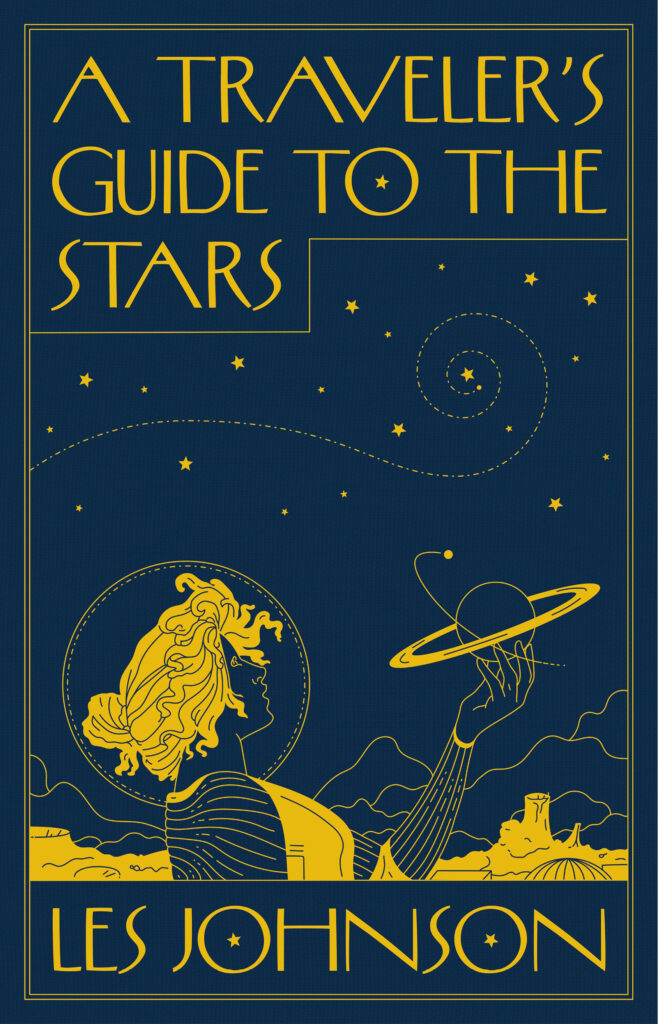
A Traveler’s Guide to the Stars
Les Johnson
Princeton University Press £22 ● HB
Penned by the former head of NASA’s turn-of-the-century Interstellar Propulsion Research Project, this is a concise book on a big topic: could (and should) we travel to another star? The book is dedicated to Gregory Matloff, co-author of The Starflight Handbook, the 1991 bible of interstellar travel. So do we really need another? Have there really been that many developments within just three decades?
The answer, writes Johnson, is yes. For a start, it was only during the 1990s that the first exoplanets were discovered, so starships finally have destinations to aim for, even if Earth-like exoplanets remain elusive. NASA and other institutions are studying probes to explore the interstellar medium, which might eventually arrive at the focus of our Sun’s own gravity lens, about 550 AU away. Our parent star’s bending of spacetime would make far-distant celestial objects – including rocky exoplanets – resolve into view as if right beside our spacecraft.
Technology has moved on too, says Johnson. The proliferation of shoebox-sized ‘CubeSats’ in Earth orbit shows how tiny ‘chipsats’ could do worthwhile work, while staying small enough to be economically accelerated to a reasonable fraction of light-speed. Novel materials like atom-thick, stronger-than-steel graphene might make suitable sails for laser propulsion. Maintaining human-carrying ‘worldships’ across multiple generations is becoming more feasible.
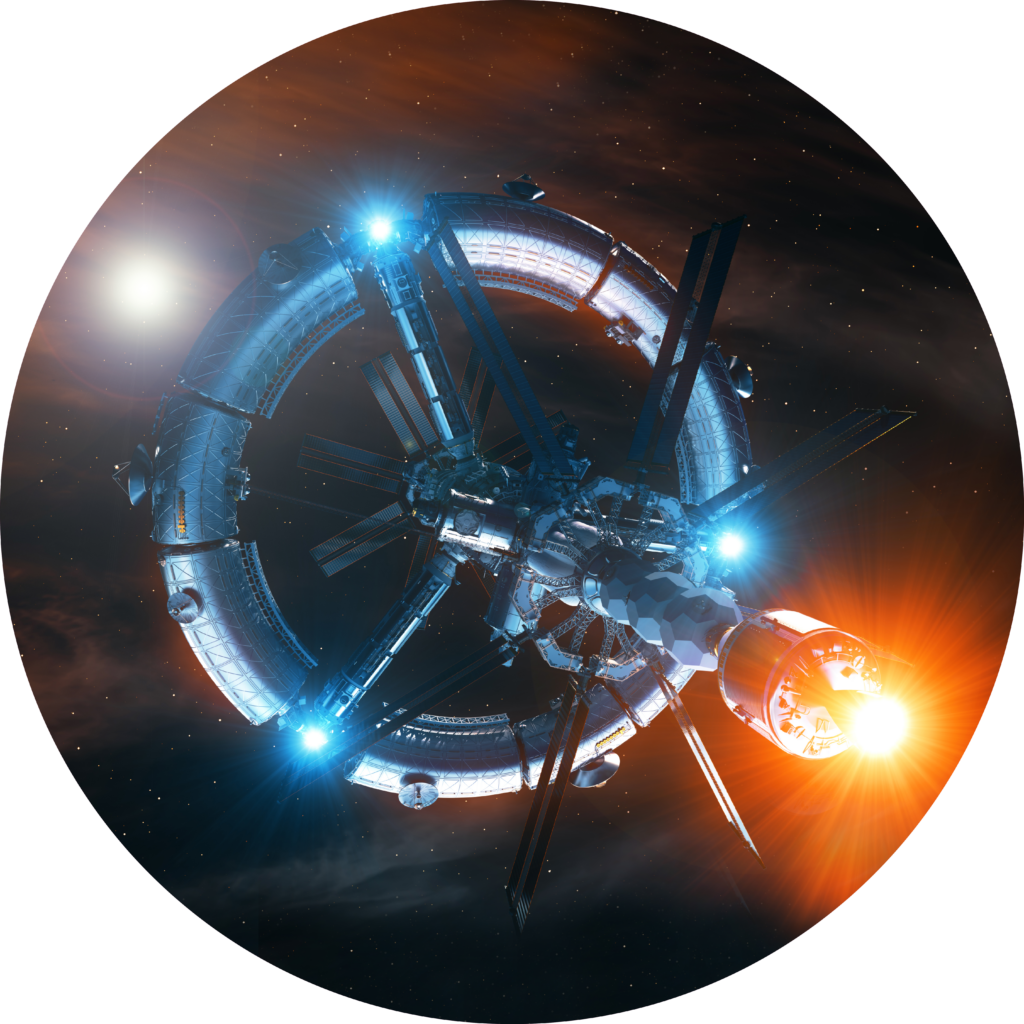
This book is no science paper, but sets out its stall in clear prose, supported by elegant illustrations. Will we ever make it to another star? Johnson argues it is already possible on a brute force basis: the 1950s nuclear-bomb-powered Orion concept could accelerate a battleship-sized spacecraft to a tenth of lightspeed, but at the cost of potentially contaminating our own world.
The end result is a satisfying read, which also discusses science fiction examples of interstellar travel. Noting how the majority of his NASA colleagues were motivated to get into the space field by Star Trek, Johnson argues that sci-fi needs to be considered: “Going to the stars will not happen unless people have a vision to make it happen.” ★★★★
Interview with the author Les Johnson

Is interstellar travel currently possible?
Technically, yes. The Voyager spacecraft, if pointed in the right direction, could arrive at another star system in about 70,000 years, but they would be dead and non-functional. Within the known laws of physics, we might be able to get spacecraft to accelerate much faster and get to another star in a few hundred years, but there’s a difference between physics and engineering. Today, we don’t have the engineering skills to build spacecraft to travel those distances that fast.
How much data could we get?
Unless you can slow down, you’re going to fly through a star system in days. Data would be quickly received and transmitted back, then you’re back out in deep space. We need to launch many probes cheaply to different destinations, so our descendants don’t just get data from one location. Instead, they’ll get it from a host of exoplanets.
Where should we go?
The nearest star and the planets around it are an obvious choice, but ultimately we want to survey the 100 nearest star systems with planets. If we’re sending humans, we want to send them somewhere there’s hope for survival. But who knows what our great grandchildren will look like, how disease resistant they’ll be and how long they’ll live. What will environmental support systems look like in 150 years? Maybe instead of modifying an environment, our descendants will modify themselves for the environment. We shouldn’t underestimate what changes might happen over several hundred years.
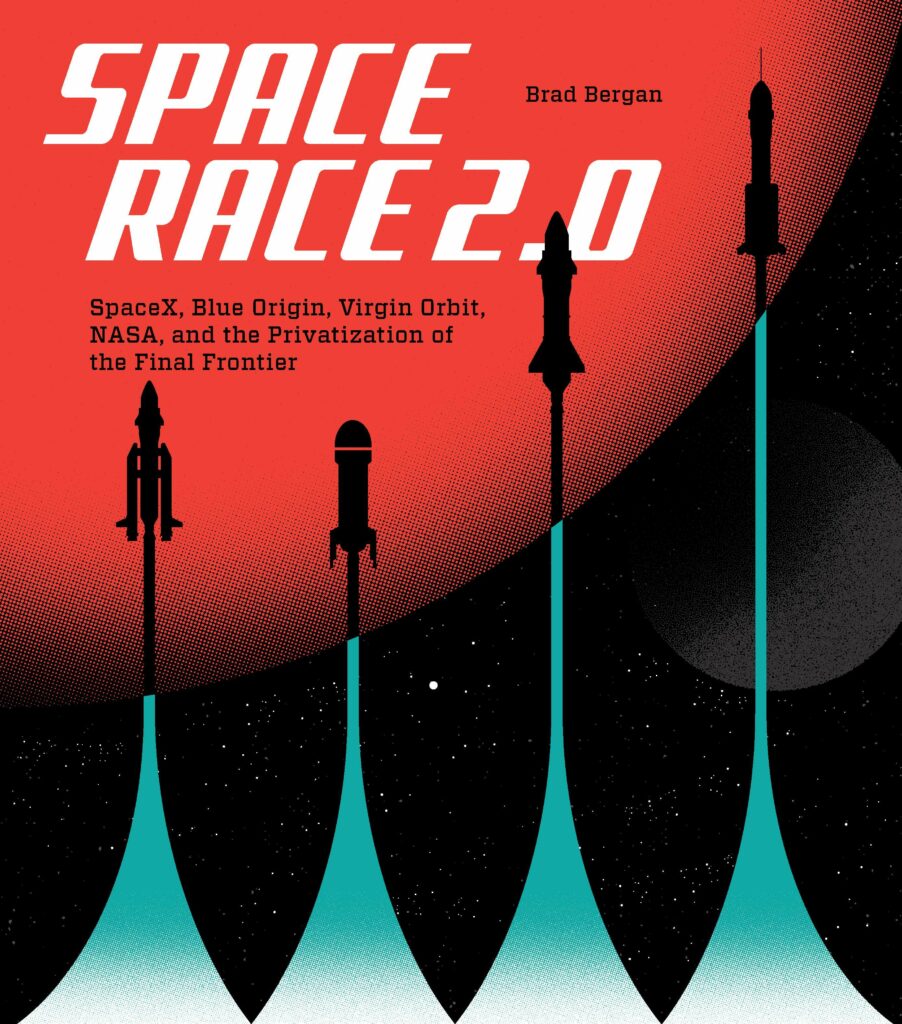
Space Race 2.0
Brad Bergan
Quarto £28 ● HB
Privately funded space travel, a long-time staple of science fiction, has become a reality of the 21st century at a phenomenal pace, compared to previous state-funded approaches. Space Race 2.0 tells the story of this commercial battle to turn dreams inspired by Apollo into profitable business models.
It begins with a brief biography of the three main players – Elon Musk, Richard Branson and Jeff Bezos – including a discussion of the conditions that have allowed them to become so wealthy. The main body of the book chronicles the often explosive search for reusable launch systems that can open up space for both people and payloads. It covers flights up until early 2022, including William Shatner becoming the oldest astronaut to date. The final chapters deal with China’s recent accelerated space programme and a look to the future.
Each chapter contains a wealth of large colour photographs of the hardware, along with some beautiful artists’ impressions of future goals. The author also looks at some of the wider implications of this new industry, for example, on the environment both on Earth and in orbit.
There aren’t a lot of technical details about the vehicles themselves, however, as this book gives a more journalistic account of the flights and some of the resulting social media or legal squabbles.
Overall, Space Race 2.0 gives a wonderful snapshot of commercial space flight as it stands today. As well as being an interesting read, it will be something to look back on as the race continues. ★★★★
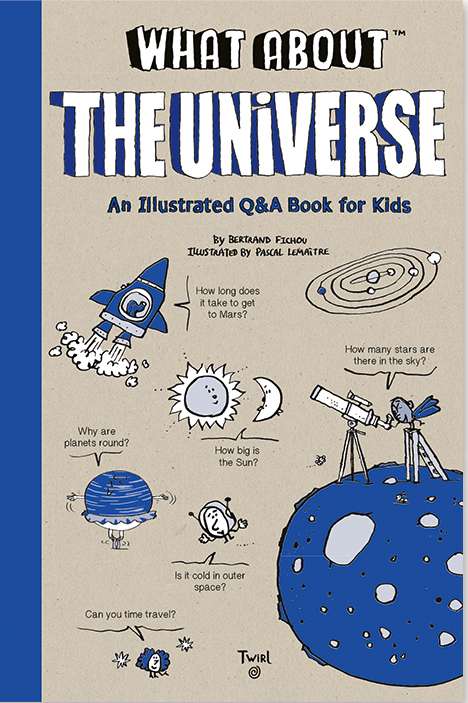
What About the Universe?
Bertrand Fichou
Twirl £12.99 ● HB
If you’re looking for a great and fun astronomy present for your insatiably curious nine-year-old niece or nephew, stop looking and buy this book. But before you give it away: make sure to enjoy it yourself. At the very least, it will provide you with an entertaining refresher course of astronomy basics.
There are plenty of children’s books about the Universe, but in many cases they are disappointingly superficial when it comes to factual content. This is a missed opportunity, young kids are one of the most knowledge-hungry audiences. Indeed, they revel in surprising facts, crazy concepts, weird ideas and unimaginable numbers. Little wonder that almost all children are excited about astronomy and space.
Author Bertrand Fichou doesn’t shy away from difficult topics. In fact, the first two spreads of his book discuss the expansion of the Universe and the Big Bang. The 40 or so mini-chapters in the book all have a question as a title, like ‘Why don’t people on the other side of Earth fall into space?’, ‘Can you time travel?’ and ‘How do planets and stars get their names?’. The many subjects are all well-chosen and clearly answered in a straightforward and easy-to-grasp style.
The real value of the book is in the comical-yet-informative drawings by Pascal Lemaître (a distant relative of Georges Lemaître of Big Bang theory fame). Loaded with funny characters and humorous details, these illustrations will grab the attention of young inquisitive readers, and help them grasp the wonders of the cosmos. ★★★★★
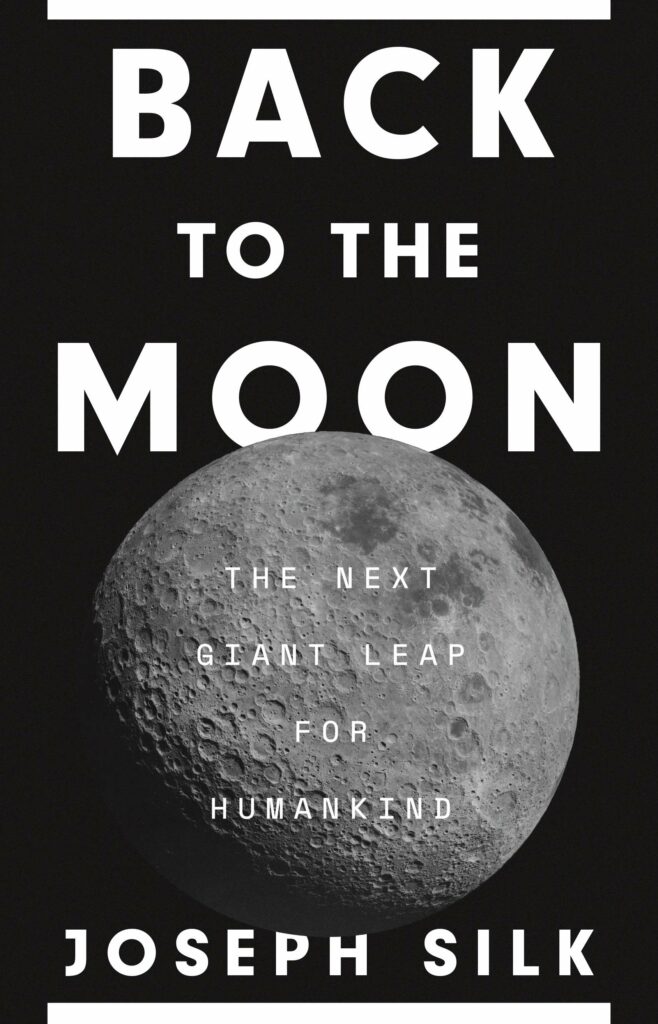
Back to the Moon
Joseph Silk
Princeton University Press £25 ● HB
The Moon is widely recognised as a valuable resource, not only in terms of exploitation but also in aiding our understanding of our place in the Universe. Ultimately, it helps us to answer a question we have been pondering for thousands of years: “are we alone?”. With the recent successful launch of Artemis I in November 2022, our quest to establish a human presence on the Moon is growing ever closer. A new Space Race has begun.
Back to the Moon explores the fundamental topics surrounding this new era of discovery, including the construction of bases on the lunar surface, mining and – perhaps most pertinently – space law. Author and astrophysicist Joseph Silk does not beat around the bush, offering us the facts in a no-nonsense way that the reader will find thrilling, fascinating and sometimes even concerning.
Using examples reminiscent of an Arthur C Clarke story, Silk will have you pondering the future of Moon exploration and what that means for all of us. He delves into the problems and threats that we face here on Earth and how space can be used to our advantage. Conveying the challenges and the exciting possibilities that lie ahead, including the construction of gigantic telescopes on the far side of the lunar disc, Back to the Moon has an ‘all-rounder’ appeal. While the book is suitable for those starting out in their quest to learn and understand the possibilities of lunar exploration, it will also appeal to those more experienced readers requiring an up-to-date account.
Perfect for readers at any level, Back to the Moon will satiate the most curious of minds. ★★★★